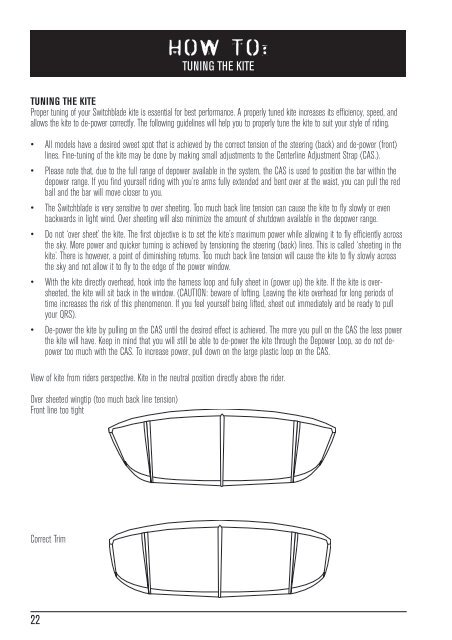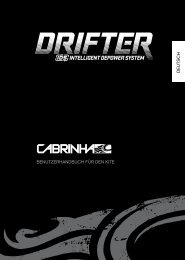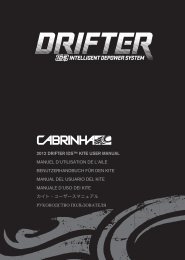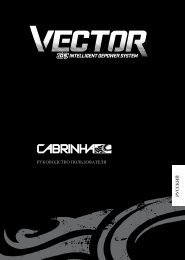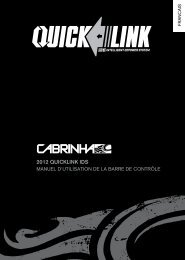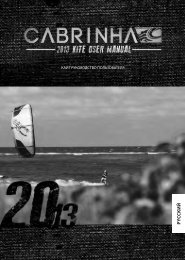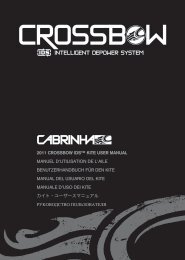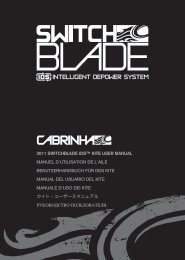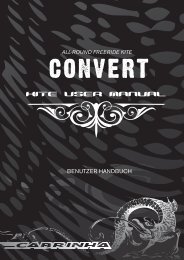SWITCHBLADE 2 - Cabrinha
SWITCHBLADE 2 - Cabrinha
SWITCHBLADE 2 - Cabrinha
You also want an ePaper? Increase the reach of your titles
YUMPU automatically turns print PDFs into web optimized ePapers that Google loves.
HOW TO:<br />
TUNING THE KITE<br />
TUNING THE KITE<br />
Proper tuning of your Switchblade kite is essential for best performance. A properly tuned kite increases its efficiency, speed, and<br />
allows the kite to de-power correctly. The following guidelines will help you to properly tune the kite to suit your style of riding.<br />
• All models have a desired sweet spot that is achieved by the correct tension of the steering (back) and de-power (front)<br />
lines. Fine-tuning of the kite may be done by making small adjustments to the Centerline Adjustment Strap (CAS.).<br />
• Please note that, due to the full range of depower available in the system, the CAS is used to position the bar within the<br />
depower range. If you find yourself riding with you’re arms fully extended and bent over at the waist, you can pull the red<br />
ball and the bar will move closer to you.<br />
• The Switchblade is very sensitive to over sheeting. Too much back line tension can cause the kite to fly slowly or even<br />
backwards in light wind. Over sheeting will also minimize the amount of shutdown available in the depower range.<br />
• Do not ‘over sheet’ the kite. The first objective is to set the kite’s maximum power while allowing it to fly efficiently across<br />
the sky. More power and quicker turning is achieved by tensioning the steering (back) lines. This is called ‘sheeting in the<br />
kite’. There is however, a point of diminishing returns. Too much back line tension will cause the kite to fly slowly across<br />
the sky and not allow it to fly to the edge of the power window.<br />
• With the kite directly overhead, hook into the harness loop and fully sheet in (power up) the kite. If the kite is oversheeted,<br />
the kite will sit back in the window. (CAUTION: beware of lofting. Leaving the kite overhead for long periods of<br />
time increases the risk of this phenomenon. If you feel yourself being lifted, sheet out immediately and be ready to pull<br />
your QRS).<br />
• De-power the kite by pulling on the CAS until the desired effect is achieved. The more you pull on the CAS the less power<br />
the kite will have. Keep in mind that you will still be able to de-power the kite through the Depower Loop, so do not depower<br />
too much with the CAS. To increase power, pull down on the large plastic loop on the CAS.<br />
View of kite from riders perspective. Kite in the neutral position directly above the rider.<br />
Over sheeted wingtip (too much back line tension)<br />
Front line too tight<br />
Correct Trim<br />
22<br />
CK07SwitchbladeUserManual.indd 22<br />
8/10/06 3:40:56 AM


